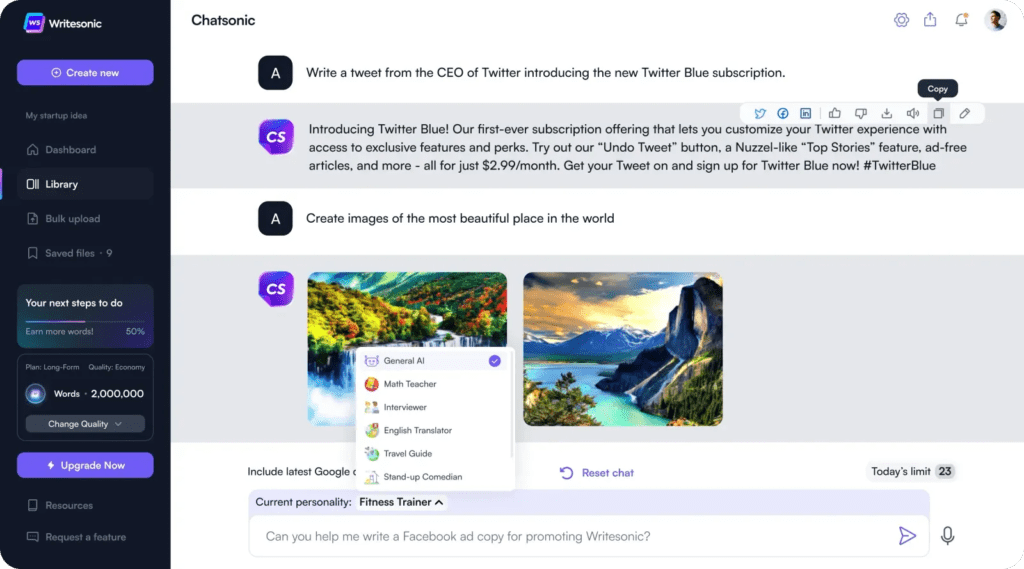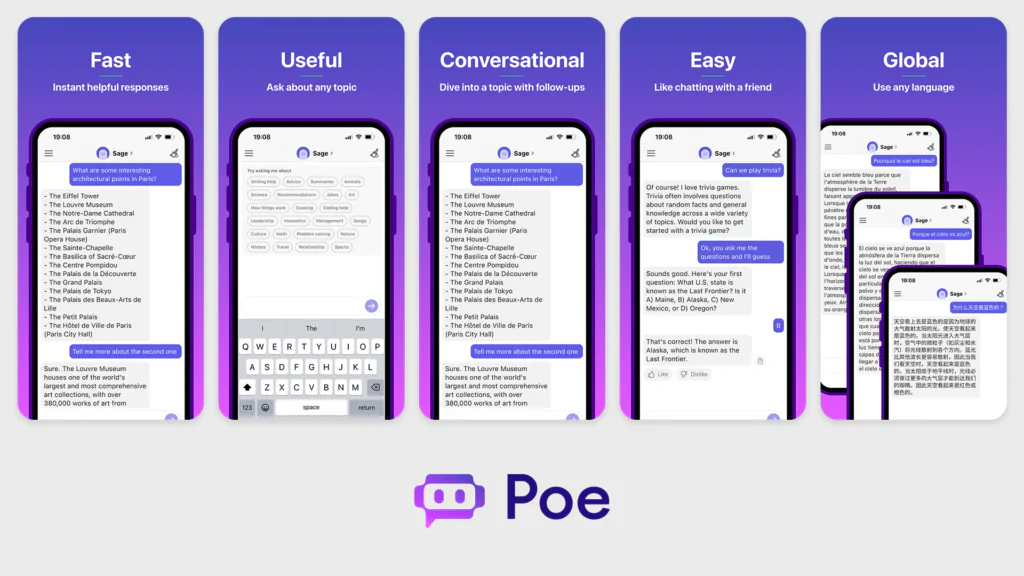Since its public launch in late 2022, ChatGPT has captivated the world. Developed by OpenAI, this advanced AI conversational agent can understand and generate human-quality text. With its vast potential, ChatGPT swiftly became the fastest-growing web application, surpassing 100 million users in just two months.
To delve deeper into ChatGPT’s capabilities for data science, explore our tutorial on leveraging ChatGPT for data science projects. For a comprehensive introduction to ChatGPT’s diverse applications, consider our Introduction to ChatGPT course.
While ChatGPT is undeniably the most prominent generative AI tool, it’s merely the vanguard of a broader AI revolution. Numerous cutting-edge AI tools are emerging, offering compelling alternatives to ChatGPT. As we’ll demonstrate, these tools present compelling reasons for consideration.
Since its public launch in late 2022, ChatGPT has captivated the world. Developed by OpenAI, this advanced AI conversational agent can understand and generate human-quality text. With its vast potential, ChatGPT swiftly became the fastest-growing web application, surpassing 100 million users in just two months.
To delve deeper into ChatGPT’s capabilities for data science, explore our tutorial on leveraging ChatGPT for data science projects. For a comprehensive introduction to ChatGPT’s diverse applications, consider our Introduction to ChatGPT course.
While ChatGPT is undeniably the most prominent generative AI tool, it’s merely the vanguard of a broader AI revolution. Numerous cutting-edge AI tools are emerging, offering compelling alternatives to ChatGPT. As we’ll demonstrate, these tools present compelling reasons for consideration.
Table of Contents
1. Microsoft Copilot
Developed by OpenAI with the backing of Microsoft, ChatGPT has taken the world by storm. Following its successful launch, Microsoft further solidified its position in the AI revolution by integrating ChatGPT’s capabilities into its AI companion, Microsoft Copilot.
Previously known as Bing, Microsoft Copilot is now powered by GPT-4, a more advanced LLM than the GPT-3.5 that underpinned ChatGPT. By incorporating a text-to-image LLM, Copilot can provide multimodal responses, combining text and images to answer user queries.

Designed as an interactive chat experience, Copilot offers real-time results with cited sources, ensuring accuracy and reliability. Best of all, Copilot is free to use. However, there are limitations on the number of prompts per session, and occasional speed issues may arise. Like other LLMs, Copilot can sometimes generate inaccurate or biased information.
2. Google Gemini (Formerly Known as Google Bard)
A significant competitor to ChatGPT is Google Gemini, a suite of advanced AI models developed by Google DeepMind. Designed to process both text and images, Gemini incorporates a memory system and APIs for real-time data access. Its versatility enables it to support complex AI applications, including conversational agents and multimodal tasks.

3. Claude 3.5 Sonnet
Claude 3.5 Sonnet is an advanced language model developed by Anthropic, designed to handle complex language tasks with enhanced efficiency and context understanding. Known for its nuanced reasoning capabilities and focus on ethical AI, it stands out for its ability to deliver coherent and detailed responses. Ideal for diverse applications, it balances innovation with safety in generating conversational and creative outputs.
Claude 3.5 Sonnet can also be used by developers through its its API. To learn more, read this Claude 3.5 Sonnet API tutorial.

4. ChatSonic
Branded as a conversational AI that addressed the limitations of ChatGPT, ChatSonic is a solid alternative for those interested in content creation and creative tasks.
The latest version of ChatSonic is powered by GPT-4 and Google Search, which can give you up-to-date information. It also offers multimodal replies and customized answers based on avatars.

5. Poe
ChatGPT, Bing, or Bard are great tools, but each has strengths and weaknesses. Wouldn’t it be great to have all these chatbots in the same place, so you can seamlessly switch between them? That’s the idea behind Poe.
Developed by Quora, Poe uses state-of-the-art models like GPT-3.5-Turbo, GPT-4, Claude +, LlaMA 2, PaLM, and many other large language models (LLMs). Further, it allows you to create personalized chatbots using initial prompts.
Poe is fast, easy to use, and provides accurate answers based on prompts that can be passed through different chatbots as if you were sending the same message to different friends on WhatsApp.

- How to generate SQL from Informatica Jobs XML using LLM
- New Tips – How to Prepare for Generative AI Interview
- AI Agent vs Agentic AI: Top 10 Interview Q&A (Accenture Experience)
- Top 21 Generative AI Engineer Interview Questions and Answers
- Switch from Non-IT to IT Career in 2025 (Step-by-Step Guide)
ChatGPT Alternatives Overview
Here is a table with a summary of the best 10 ChatGPT Alternatives:
| Name | Created by | Main Function | Pros | Cons |
| Bing AI | OpenAI and Microsoft | AI-based search engine | Powered by GPT-4,Up-to-date information,FreeMultimodality | It may throw inaccurate resultsLimited number of prompts per session |
| Google Bard | AI-based search engine | Powered by PaLM 2 modelUp-to-date informationGood for coding tasks.Free | It delivers only a fraction of its potentialOverall, lower performance compared with ChatGPT | |
| Claude | Anthropic | AI chatbot designed to be helpful, honest, and harmless | High performance in multiple domainsTrained in AI ethics values | No free versionCannot provide up-to-date replies |
| Perplexity | Perplexity AI | Open-source LLM for AI research | Provide sources and referencesExcels in a wide variety of tasksMinimalist interfaceFree versionCopilot mode for premium users | It may provide inconsistent responsesLimited problem-solving capabilitiesIt may mix up information from different sources |
| ChatSonic | WriteSonic | Conversational AI chatbot built to address the limitations of ChatGPT | Powered by GPT4MultimodalityCustomized repliesFree version | Premium plan for advanced useConfusing InterfaceSlow speed |
| Poe | Quora | Universal chatbot combining several LLMs | An all-in-one app for popular AI toolsFast performanceChange between chatbots with one click | Free version with limited capabilitiesCostly premium version |
| Pi | Inflection | Personal AI assistant | Smartphone-orientedTalking capabilitiesAdaptable behavior based on users | Difficulties to answer complex questionsMay experience hallucinationsNot available for Android |
| Amazon CodeWhisperer | Amazon | AI coding assistant | High performance in popular programming languagesProvide code references and licensesFree | Lower performance with less popular programming languagesTrained with code of only a few programming languages |
| Jasper | Jasper | AI writer and AI marketing co-pilot | Ideal for content creators and marketers+50 Ready-to-use templatesTrained on +30 languages | No free planStruggles with technical questionsSometimes its replies are generic and repetitiveRequires fact-checking |
| DataLab | DataCamp | AI coding assistant | Easy to useIdeal for data practitionersApplicable to all data science programming languagesAvailable on free tier | Like all large language models, may experience hallucinations |
Choosing the Best ChatGPT Alternative
We hope you enjoyed our list of the best 10 AI ChatGPT alternatives. The AI industry is booming, and new generative AI models are reaching the market daily.
We’re living in exciting times, but with such an increasing catalog of options, it can be difficult to decide which one to go for. As we explained, each model comes with strengths and limitations. Trying them and reading users’ reviews is the best way to understand better what is more suitable for your needs and your pocket.